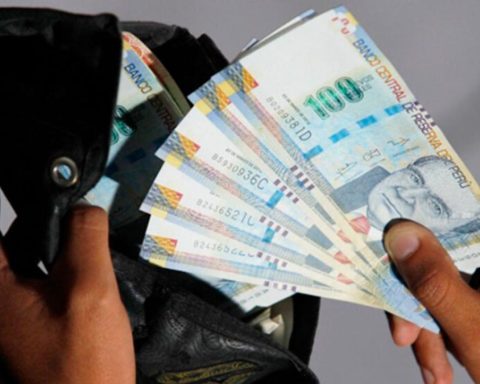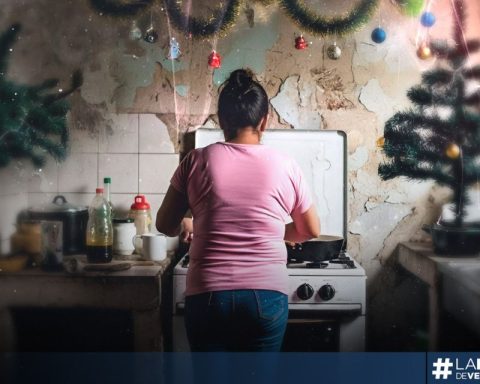The Central American Institute for Fiscal Studies (Icefi) warned that the Nicaraguan public debt is approaching unsustainable levels which, in the case of an economy such as the country’s, is marked at 70% of the gross domestic product (GDP).
The alert is included in the document “A brief review of the Fiscal Situation in Nicaragua”, which compares the figures for 2021, with those projected for 2022, and those executed in 2020, which was prepared by economists Sucely Marleny Donis Bran and Abelardo Medina Bermejo.
The total public debt would have reached 238,596.4 million córdobas (47.8% of GDP), if only the non-financial public sector is counted, that is, the central government, plus state companies. That percentage is within the parameters of sustainability for the characteristics of an economy like the Nicaraguan one.
That changes when the debt of the Central Bank of Nicaragua (BCN) is included -which practically doubled between 2021 and 2026- because the total debt rises to 326,348.5 million córdobas, which would be equivalent to 62.0% of GDP.
The Icefi warns that if the forecasts for 2021 are met, and those of the 2022 Budget, the total debt of the non-financial public sector will decrease to 45.1% of GDP, but that when including that of the BCN it will rise to 65%, which approaching the level of unsustainability.
Less employment; more poverty
Although the preliminary data on GDP growth will be published until April 1 of this year, the Icefi works with the minimum of 7.5% that the BCN calculated at the end of last year, noting that the current Budget “reflects an expected value of growth of 6.0% by 2022”.
Even considering as valid the minimum of 7.5% that the BCN calculated for 2021, the Icefi believes that a good part of that growth is due to international remittanceswhich reach close to 15.0% of GDP, and in any case, this performance is still insufficient to curb poverty and unemployment.
quoting ECLAC datathe Institute detailed that “poverty in Nicaragua reached 52.7% of the population in 2020, while extreme poverty will have been located around 22.8% of the population.”
“International research indicates that, by 2021, about half of Nicaraguan households reported having less income than before the crisiswhich will undoubtedly produce an effect on social stability and governability in the medium term”, he added.
Thinking about the 3.5% growth forecast by the BCN for 2022, the Report declared “unsustainable… the current political, social and economic model, based on authoritarianism, arbitrariness and the complete weakening of the rule of law”.
He also warned about the consequences of maintaining this model, because it affects “the well-being of Nicaraguan society in the present and will affect it in the future, preventing the fulfillment of development and democracy agendas, and reinforcing an inappropriate use of fiscal policy.”
Public debt grows
Although the official data has not been published, the Icefi calculates that tax collection totaled 88,886.3 million córdobas in 2021, that is, 17.8% of last year’s GDP.
This contrasts with the expected collection for 2022, which is 84,902.5 million, and 16.0% of this year’s GDP, according to calculations by the Ministry of Finance and Public Credit (MHCP).
That amount “is well below what has been observed in recent years, and confirms the practice of the Ministry of Finance of seriously underestimating the figures presented in the Budget, to avoid parliamentary rigidities and take advantage of the subsequent possibility of making extensions… in accordance with the needs that arise during the exercise.
This practice was already common in the governments that preceded the current one, as well as in other countries in the region, but in the case of Nicaragua, it is considered that the deterioration of transparency indicators has been more dramatic.
The unsustainability of the model is also illustrated by the fact that the amount of donations expected for 2022 is 1,541.8 million córdobas, which implies a contraction of 46.7% compared to the 2,891.6 million received in 2021, and represents the lowest amount recorded in the last decades.
“This item, which has represented exceptional foreign aid received in recent years, could be the recognition of a significant break of that good historical relationship with the international community”, or simply, an underestimation such as the one that is raised in terms of tax revenue, underlines the entity.
transparency is required
The Icefi, based in Guatemala, urged the Government of Daniel Ortega to act with transparency in fiscal matters, and recalled that the Corruption Perception Index (CPI) places us among the most corrupt in the world, and as the second worst in the world. continent, only above Venezuela.
In the IPC 2021 of Transparency International, Nicaragua had a score of 20 points, lower than the 22 obtained in 2020 and 2019.
This placed the country in position 164 out of 180 countries in the global measurement, which is lower than the position 159 obtained in 2020, and reflects the worst rating and position since the indicator was implemented.















